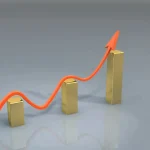ZAGREB, February 7, 2019 – The European Commission has revised down its GDP growth forecast for the Croatian economy for this year, from 2.8 percent to 2.7 percent, expecting a slowdown in exports growth due to the weakening of EU economies, Croatia’s most important trading partners.
In its interim winter economic forecast, published on Thursday, the Commission projected the Croatian GDP growth rate at 2.8 percent for 2018 and at 2.6 percent for 2020. These two projections remained unchanged from its autumn forecast, released in November 2018, whereas the growth forecast for 2019 was lowered from 2.8 to 2.7 percent.
The growth of 2.8 percent in 2018 would mark a slight slowdown from 2017 when GDP grew by 2.9 percent.
In the first three quarters of 2018, the Croatian economy grew by 2.7 percent compared with the corresponding period of 2017. The Croatian Bureau of Statistics (DZS) is due to release data for the fourth quarter of last year later this month.
The European Commission noted that last year’s growth was increasingly driven by private consumption, while exports slowed somewhat, particularly to non-EU neighbouring countries in the second half of the year.
“Private consumption is expected to remain the main driver of growth, supported by improving labour market conditions, positive consumer sentiment, low interest rates and subdued inflation. Administrative data at end-2018 suggest that dynamic employment growth continues to drive a steady fall in the unemployment rate. Private investment is expected to continue its modest growth, as companies continue to enjoy favourable financing conditions. The projected pick-up in disbursements from EU funds should provide a boost to public investment, which will nevertheless stay well below pre-recession levels,” the report says.
The Commission predicts a slight slowdown in GDP growth for this year. “In view of the anticipated slowdown in Croatia’s main trading partners in the EU, goods exports are likely to grow more slowly than in recent years. Service exports are expected to continue performing well on account of an increasingly extended tourist season and sizeable investment in higher-end hotels in recent years. Bolstered by high domestic demand, imports of goods are set to remain strong, slowing only slightly over the forecast horizon and driving the goods trade balance increasingly negative,” it said.
“Inflation has remained relatively low despite higher disposable income and recent spikes in energy prices. Wage pressures are expected to strengthen as unemployment continues to shrink further. However, inflationary pressures are projected to remain subdued thanks to the VAT rate reduction on several unprocessed food products this, and the 1 pp. reduction of the standard VAT rate next year, as well as stabilising commodity prices. In all, headline inflation is forecast at 1.4% in both 2019 and 2020,” it added.
The European Commission’s projections are similar to those by other analysts. Eight economic analysts recently polled by Hina expect that the Croatian economy will grow at an average rate of 2.7 percent this year, their projections ranging from 2.5 to 3.0 percent.
The Croatian National Bank has forecast a growth of 2.7 percent. The World Bank has estimated the growth rate for Croatia for this year at 2.8 percent, the International Monetary Fund at 2.6 percent and the European Bank for Reconstruction and Development at 2.5 percent.
The Croatian government based its budget for 2019 on a GDP growth projection of 2.9 percent.
More news on the Croatia’s economy can be found in the Business section.









